Ceramic fillings (inlays) - "CEREC"
High-quality ceramic filling for healthier and more beautiful teeth. Our dentists are experts in ceramic inlays.
- Gentle, pain-free and modern treatment procedure
- Experience from over 15,000 ceramic inlays placed
- Family practice for 40 years, now in its 2nd generation
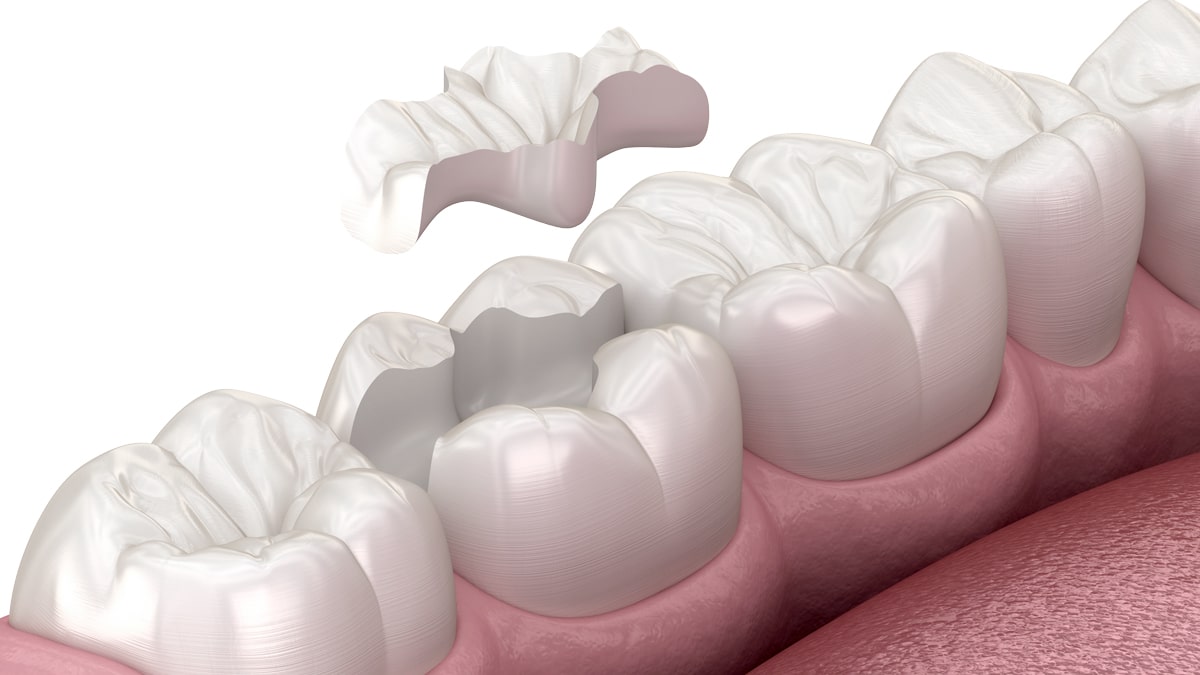
Ceramic inlay - the optimal choice for beautiful teeth
White, natural and healthy-looking teeth despite tooth defects caused by caries: this is what ceramic inlays offer as a metal-free, aesthetically and functionally high-quality restoration that lasts much longer than conventional fillings made of plastic (composite) or cement.
Ceramic inlays (“Cerec”) are inserted into a tooth if the tooth is not yet so badly damaged by caries that it requires a full covering(crown).
When restoring occlusal surfaces, ceramic is the best long-term solution in terms of both function and esthetics.
Compared to composite fillings, one of the unbeatable advantages of ceramic inlays is that they are permanently sealed so that no bacteria can re-enter the tooth.


For me, ceramic inlays are the ideal filling option for posterior teeth because of their impressive durability and aesthetics. With good oral hygiene, they will last a lifetime, just like your intact teeth.
Benjamin Hager
How does treatment with ceramic inlays work?

Investigation - the planning meeting
During the examination, the condition of the teeth is assessed. If a filling is considered, the extent of the caries, the position of the defect and the vitality of the tooth are examined.
The latest low-radiation X-ray equipment and innovative software to demonstrate the diagnosis in an understandable way for patients using sample images and videos are there to help.
This live planning with a final treatment offer with a fixed schedule and the DR. HAGER | fixed price guarantee helps patients to make an informed decision.
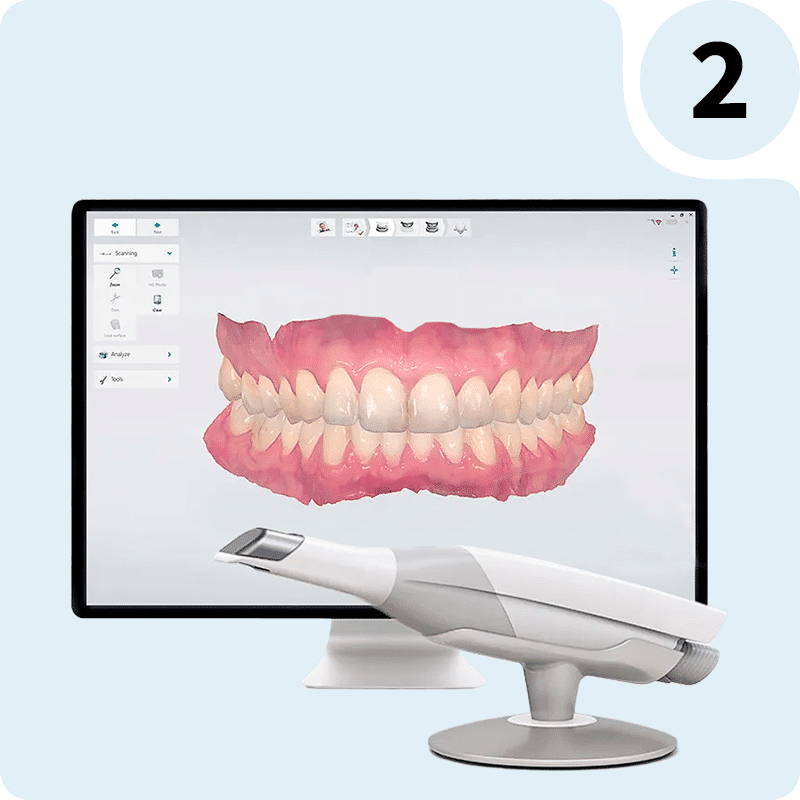
Preparation - the digital impression
After carefully administering a local anaesthetic to the tooth in question, the caries is removed in a minimally invasive procedure. The caries detector helps the dentist to remove the caries precisely.
In order to guarantee the well-known longevity of the ceramic fillings, the cavity created by the caries is then prepared for the ceramic filling. A 3D scan is now used so that the DR. HAGER dental laboratory can produce the ceramic body precisely.
The highly biological feldspar ceramic is used here. Once the 3D scan has been successfully completed, the tooth is provisionally sealed until the insertion date.
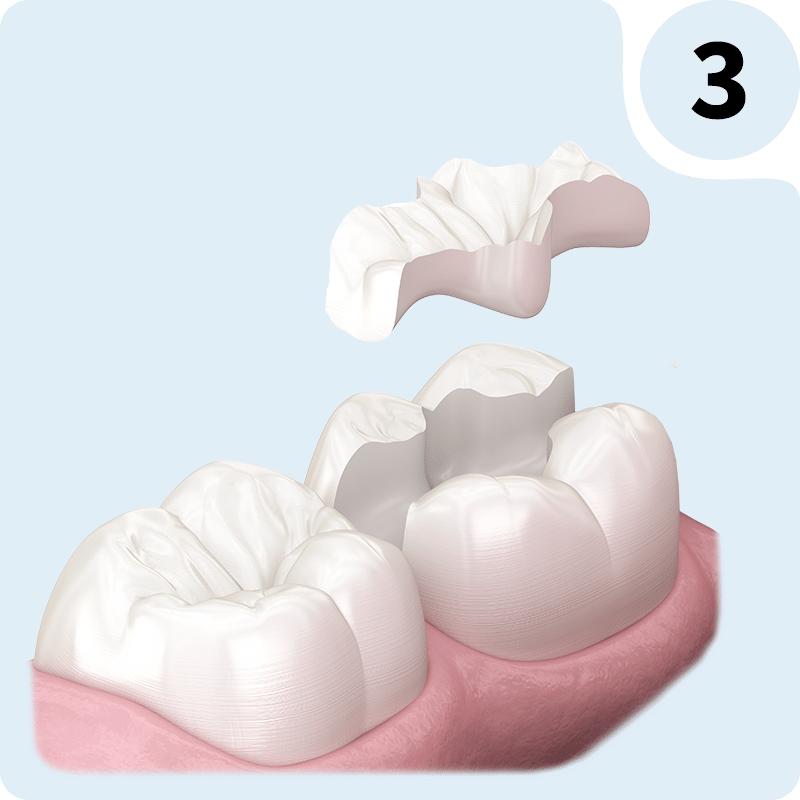
Inserting the inlay
The ceramic inlay is usually firmly and permanently inserted after one week. However, before it is bonded, the tooth must be prepared for permanent retention. Highly developed 7th generation bonding agents are used.
The dentist now follows a strict, specially developed bonding procedure. The final adjustment of the bite is the final step in completing the ceramic inlay (Cerec).
A highly esthetic, functional and durable restoration is now in place and patients can once again chew firmly on the tooth.
Gentle caries treatment with DR. HAGER
Would you like to find out more about the advantages of ceramic inlays? Make an appointment (online or by phone) for a free and non-binding consultation at our dental practice in Bietingen (near Schaffhausen) or at our dental practice in Konstanz.
Ceramic inlays - ceramic fillings and Cerec briefly explained
There are very different quality levels for the closure of a carious defect (cavity) . In principle, the closure must be absolutely bacteria-proof.
After all, caries is a destruction of the tooth material caused by bacteria. To remove these bacteria, the dentist removes the infected and thus softened tooth substance and replaces the resulting defect with a so-called filling material.
In order to prevent a renewed attack by bacteria on the already weakened area, this closure must reliably prevent bacteria from re-entering the tooth
Not only are different materials used here, but also completely different techniques.
Read more
Initially, the most reliable method for a bacteria-proof filling appears to be to press a malleable (plastic) material into the hole and then harden it: so-called plastic filling. These include such well-known materials as amalgam, cement and plastic.
However, it turned out that all of these materials have various serious disadvantages. This led to the development of the other approach: hand-crafted production of a precisely fitting hard filling body in the dental laboratory, which is then inserted into the tooth defect in a second step and firmly fixed(inlay).
Although this method is inconvenient, the seal and durability of these inlays is very high over a long period of time. These inlays are made of ceramic by the dental technician (similar to dentures) and fixed in the tooth with cement or plastic
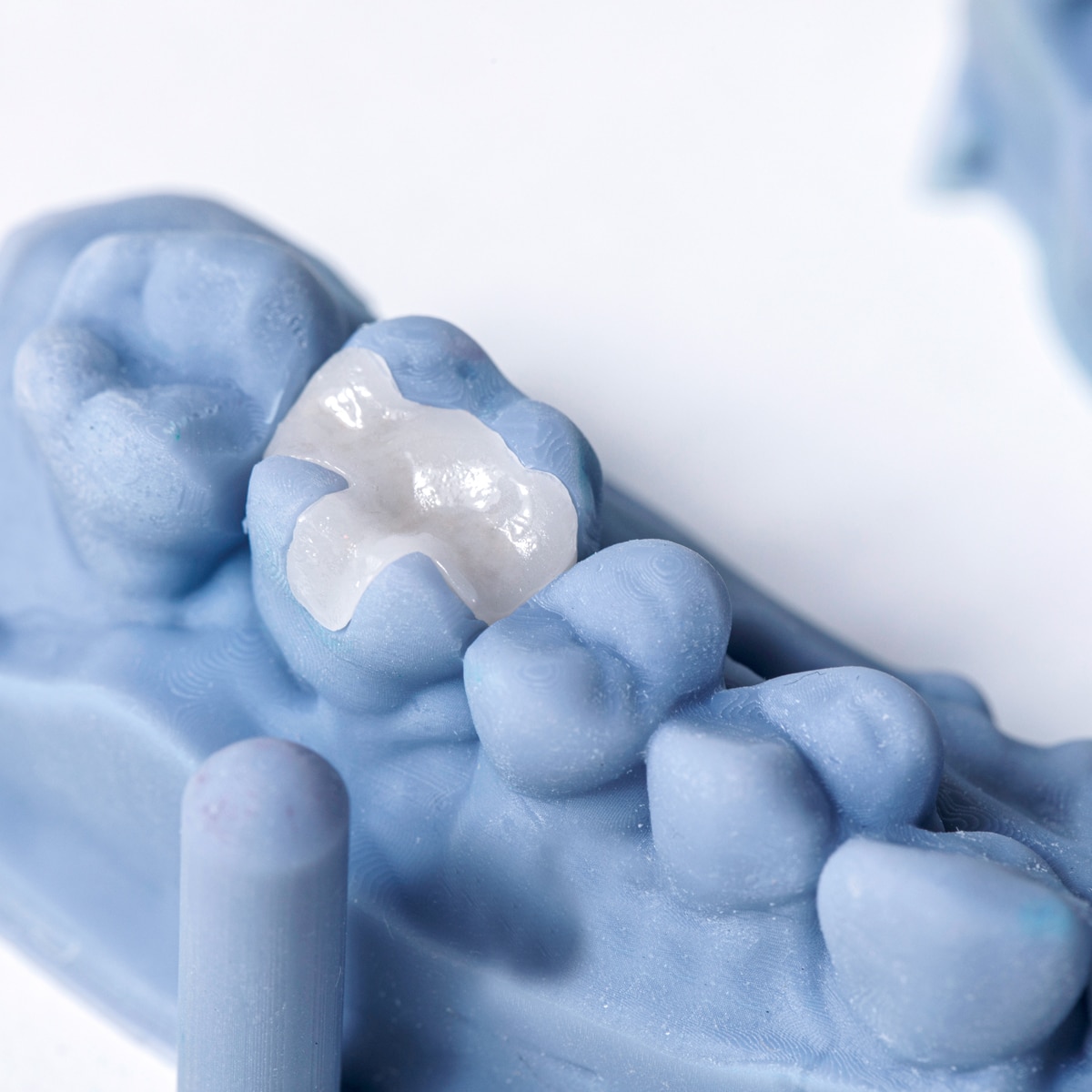
Dental fillings made from amalgam
Are a plastic filling material. Because of the black-silvery color, patients do not like this material at all, and because of the mercury content of 50%, there are reservations about its tolerability. However, despite intensive research, it has not been scientifically proven to be harmful. For us, however, this material is not recommended because of the increased risk of fracture of the surrounding tooth substance due to the permanent expansion of the material over the years. After all, these fillings are usually very dense.
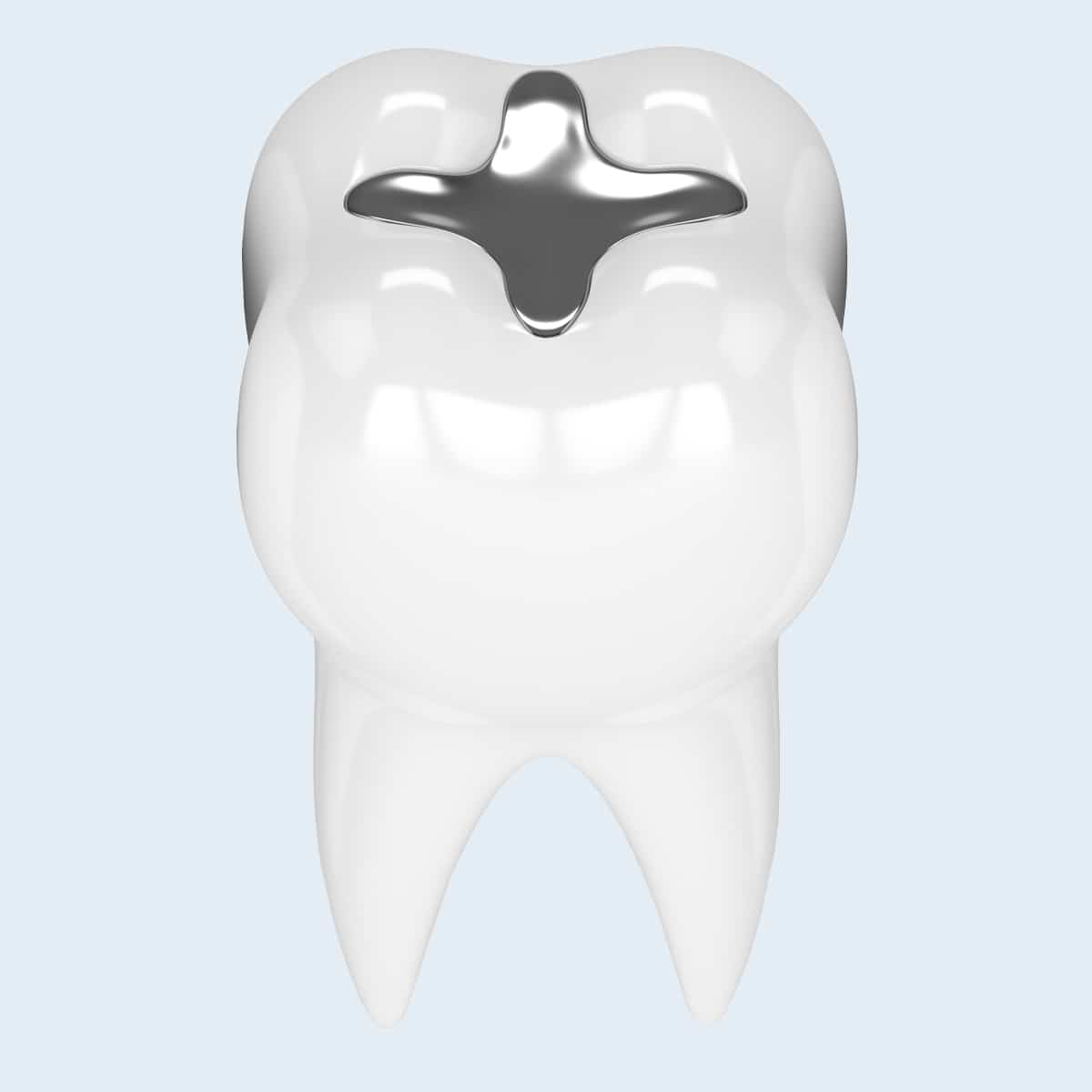
Dental fillings made of cement
Due to the heavy wear and tear, we only use them in combination with a medication for temporary fillings. The clear advantage is the excellent seal.
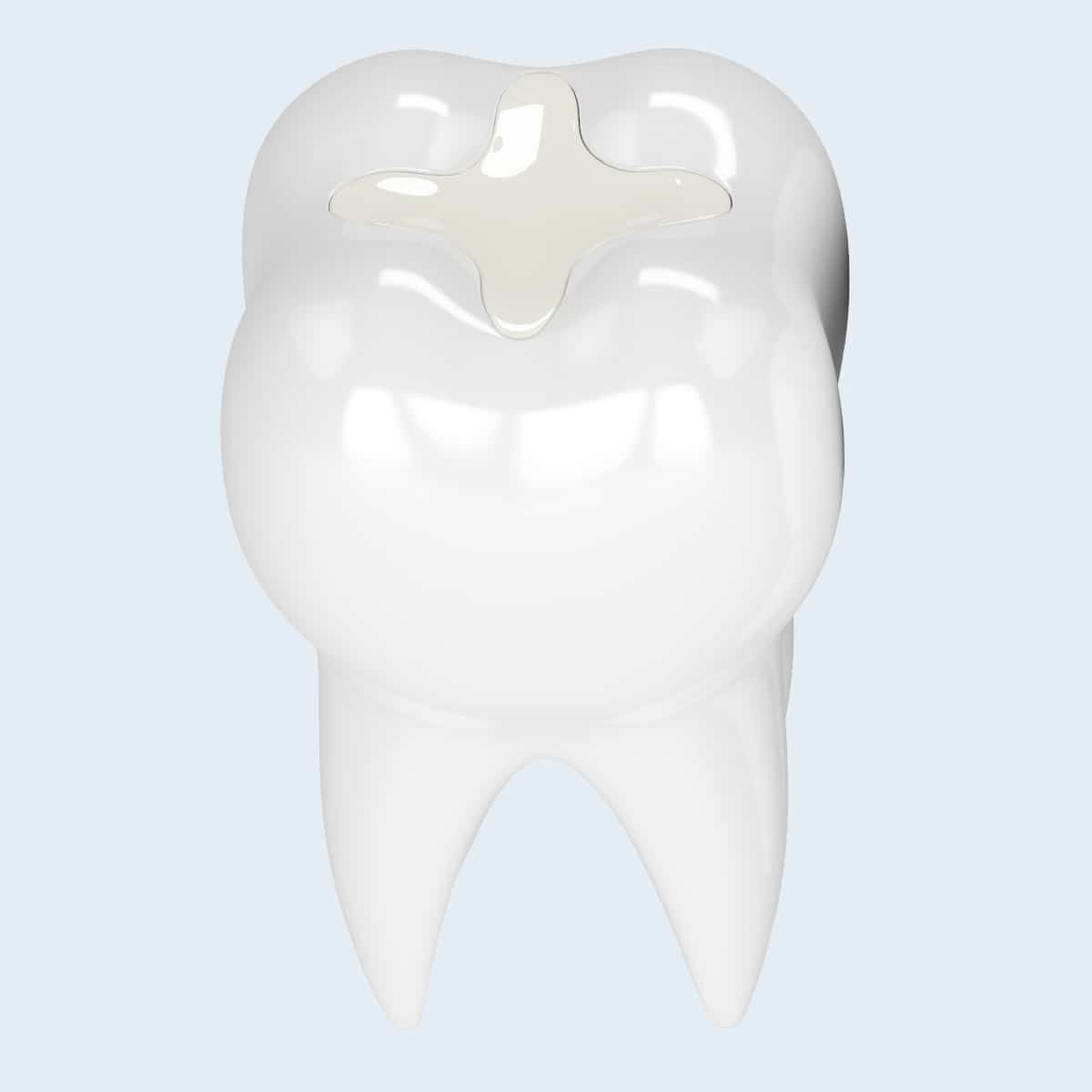
Plastic dental fillings
These filling materials are popular and widely used because their application appears simple at first, and the tooth aesthetics are also very attractive at first. The simplicity disappears immediately when the dentist tries to overcome the main shortcoming of these materials with processing tricks: the considerable shrinkage of the material when it hardens in the hole: a hair’s breadth over the length of the filling. This is like an open barn door for bacteria. In a short space of time, they can penetrate the gap created immediately during hardening and get quite close to the nerve. And the appearance: especially the transition to the natural tooth substance darkens after some time, so that the filling edge and often the material itself becomes darker and more visible. The increased wear and tear and, depending on the type, the oestrogen content are almost secondary disadvantages compared to the clear leakage.

Dental fillings made of gold
Alongside the less common plastic inlays, gold inlays have been the highest level of quality for many years. Even today, they are still very high-quality fillings. The disadvantage here is also the increased susceptibility to fracture of the unsupported tooth substance, even with gold inlays, and the appearance; gold is no longer desirable in our culture due to its visibility.
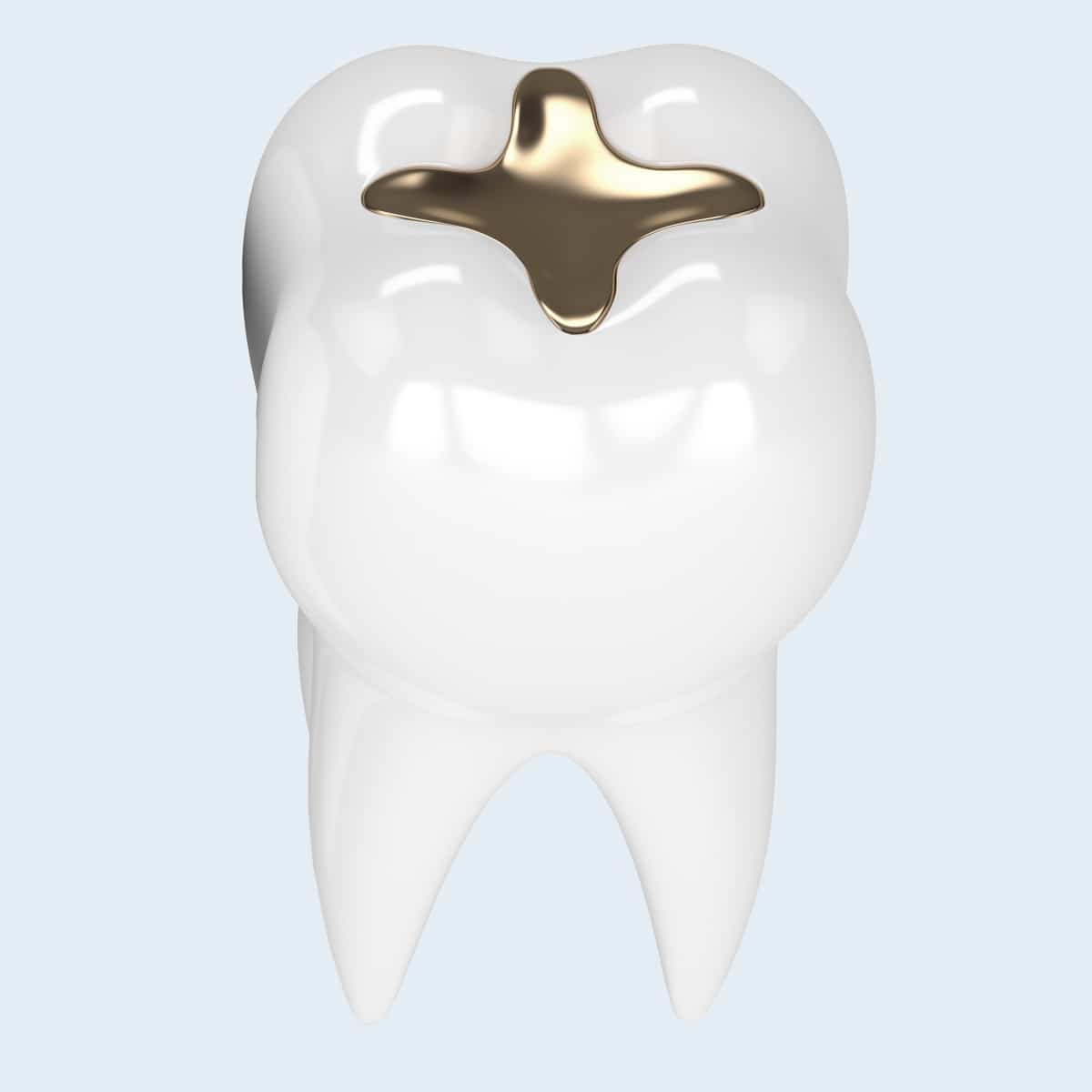
Compared to all other dental fillings, ceramic inlays have clear advantages:
- A very fracture-resistant bond even with the thinnest tooth parts and severely weakened teeth. Tooth and inlay are always firmly bonded together. The tooth becomes as stable as a natural, undamaged tooth.
- Hidden shrinkage of the ceramic inlay is ruled out because a perfectly fitting part, the inlay, produced by the dental laboratory is bonded in.
- As the industrially produced ceramic blocks are available in a wide range of shades and translucencies, the inlay meets all expectations for esthetic restorations.
The compatibility of the bioceramics used is unsurpassed. We only use German and Swiss quality products for our inlays.
Compared to restorations with crowns / bridges, restorations with bonded ceramic inlays are gentler.
As a result of the convincing successes, the range of applications was expanded to include ever larger and more complicated solutions. We have also been producing ceramic veneers for esthetic anterior teeth using the CEREC process since this time.
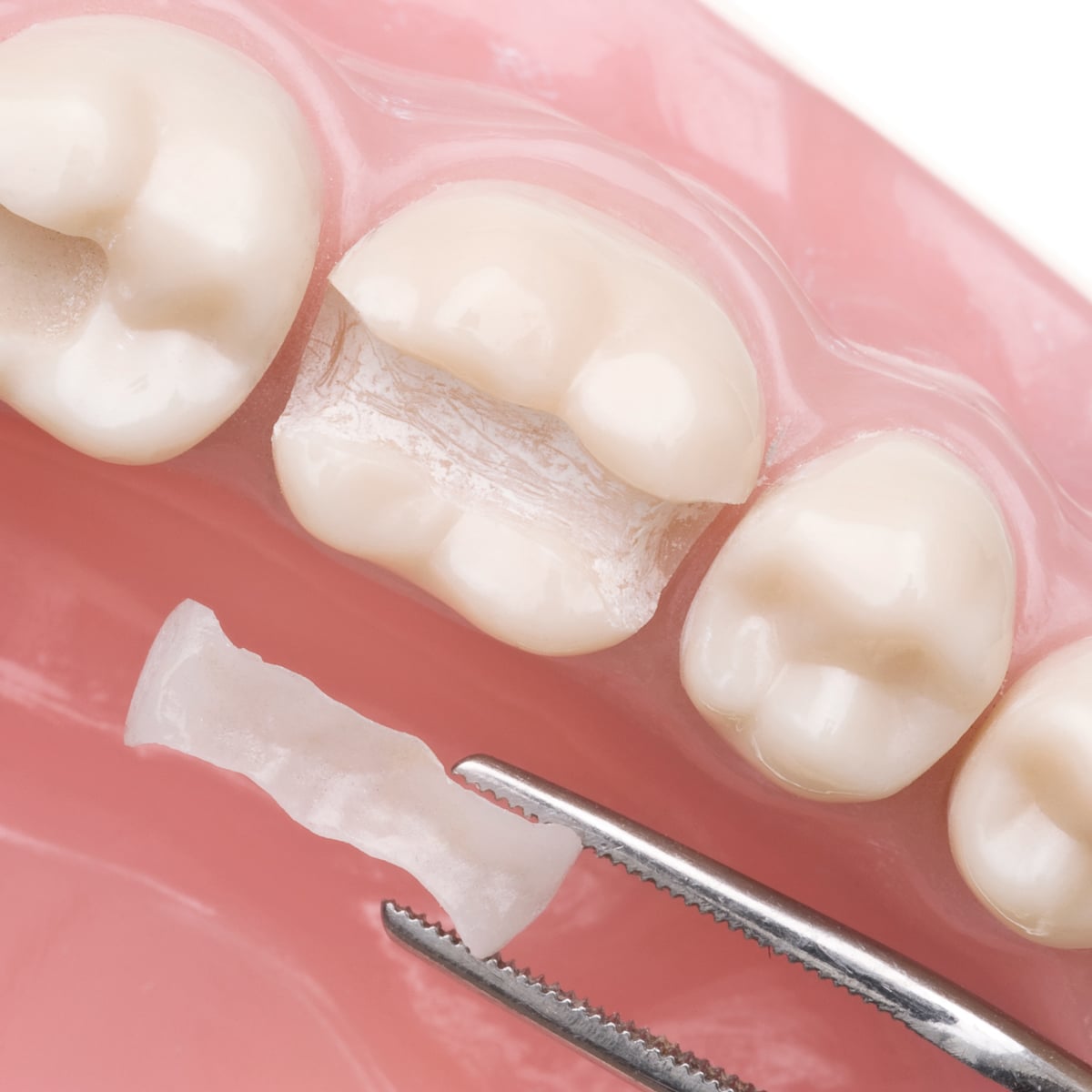
Dentist removes the decayed substance and prepares the tooth for the ceramic inlay
A typical form of ceramic inlay when there has been decay on the front and back of the tooth.
The special CEREC ceramic provides a particularly secure and good hold thanks to the adhesive cementation.
Here, too, weakened tooth walls can be successfully stabilized thanks to CEREC.
For larger defects, we can also use the CEREC system to produce onlays, overlays and even crowns on implants using the CAD/CAM system and carry out these restorations in a highly esthetic procedure.
In the treatment of bruxism, adhesively bonded esthetically high-quality internal veneers and onlays can be used to create a more gentle dentition.
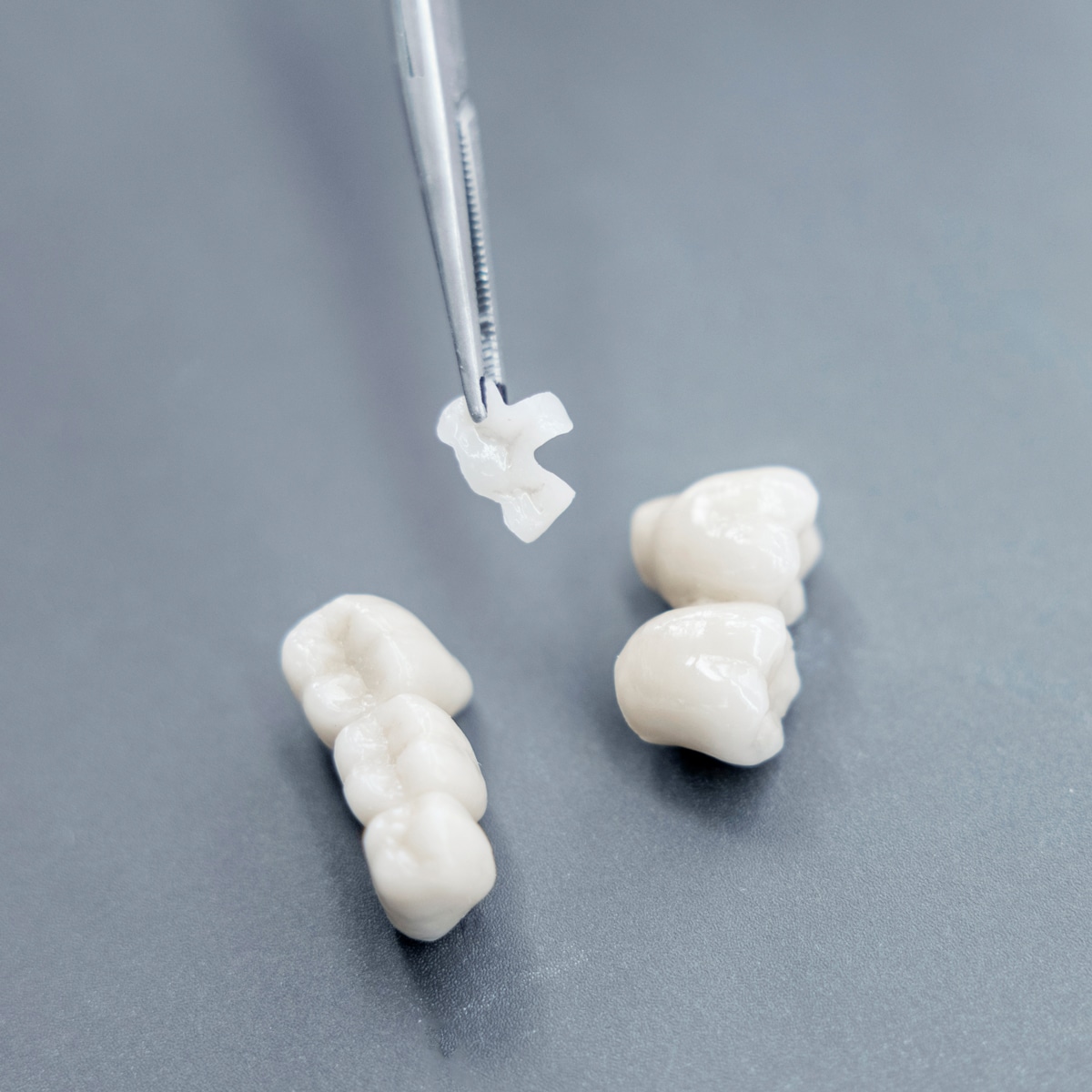
Ceramic inlays are produced individually using a digital 3D scan impression in our in-house laboratory.
A ceramic dental bridge that was custom-made in our master laboratory.
Manufacturing process for ceramic inlays
There are different manufacturing methods, either pressed ceramic (Empress) or milled ceramic (Cerec). We have been using this manufacturing method, CEramic REConstruction, developed by the University of Zurich, since its introduction in 1987 (Mörmann, Brandestini), i.e. for over 30 years.
In the meantime, we have certainly placed far more than 15,000 CEREC inlays. The CAD-CAM milling machines used in our dental laboratory with digital scanning of the milled tooth defects have improved to unprecedented precision and material quality since then.
A veritable CEREC dentist community developed with meetings and international training courses, Internet media and very creative user discussions, international industry contacts and, in the early years, very controversial university opinions.
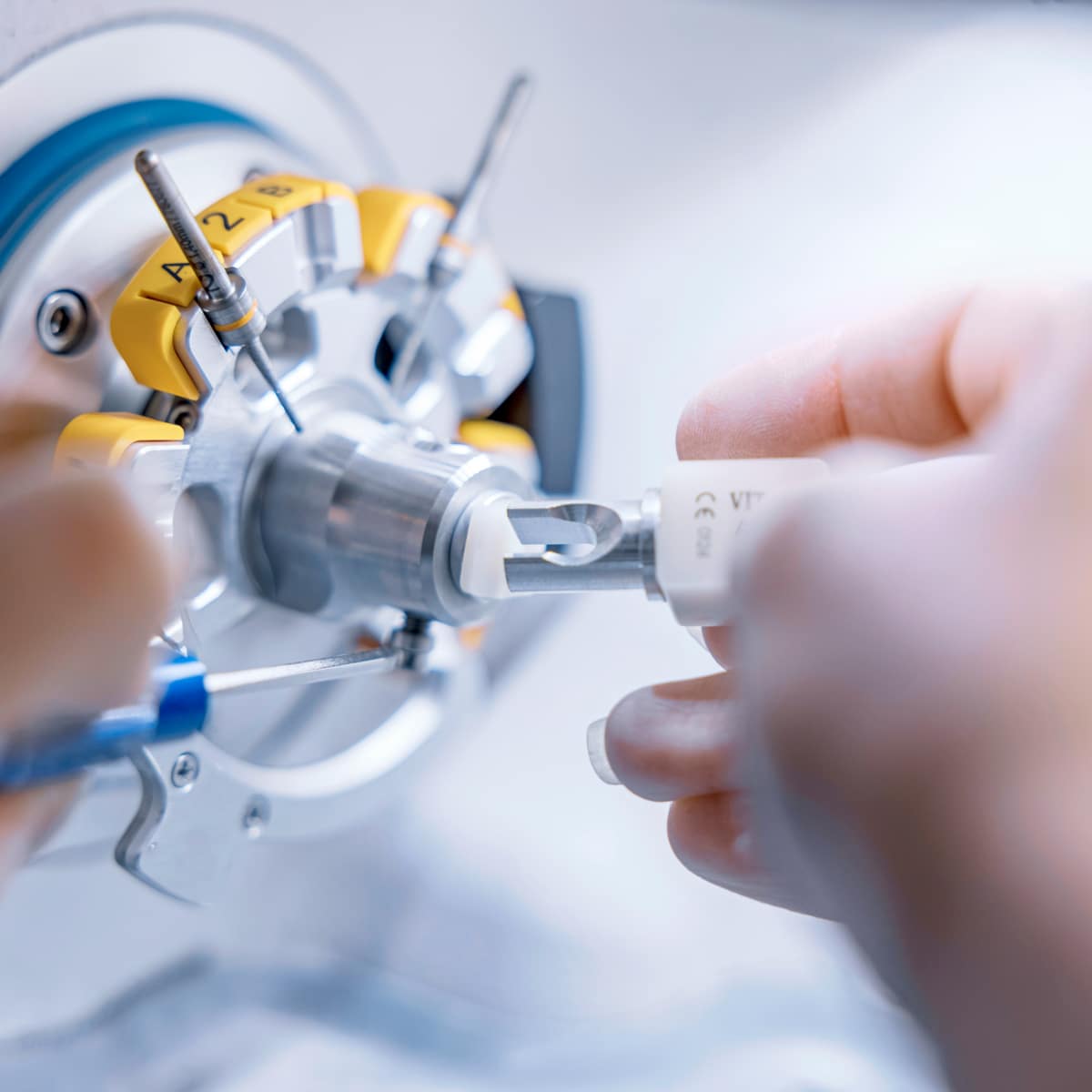
Technique of the CEREC method: After removing the decayed tooth substance, the slightly misshapen hole is smoothed with minimal loss of substance.
The shape of the defect is then measured in 3D using a digital scanner. An industrially produced ceramic block made of high-quality special ceramics is clamped into a CAD-CAM milling machine.
The 5-axis grinding machine grinds the exact shape of the ceramic inlay. This ceramic inlay is then firmly bonded into the tooth by the dentist using an adhesive process.
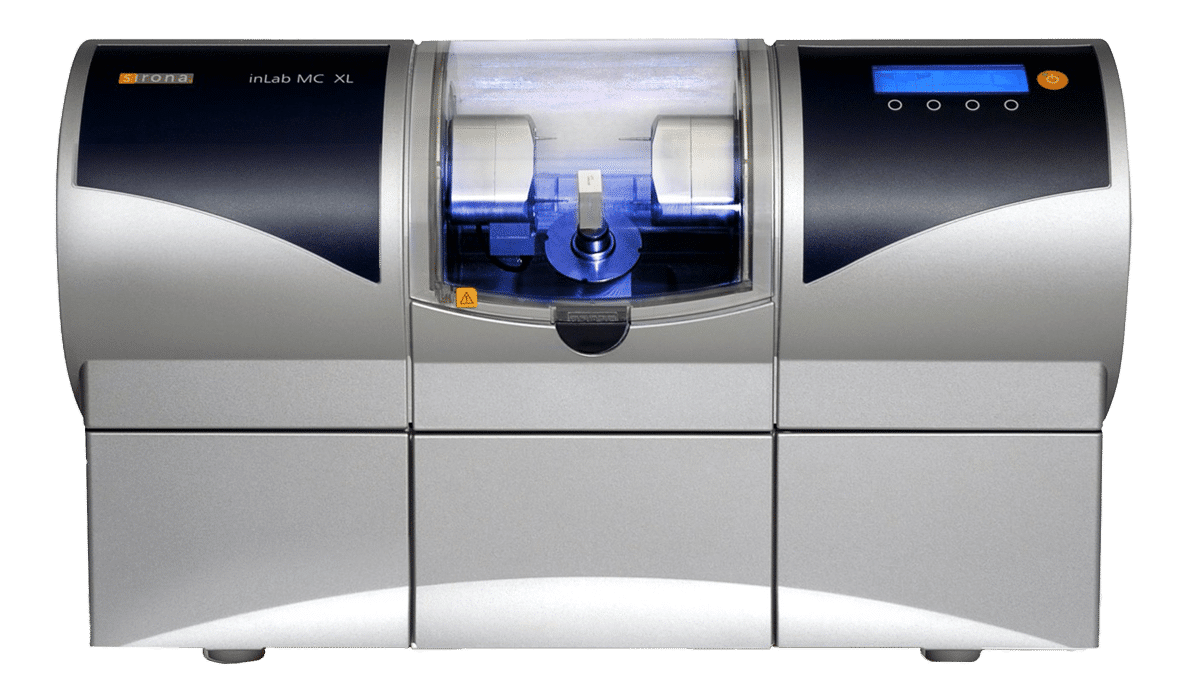
After the design, the ceramic inlay or crown is milled from a block of ceramic material using a CAM (computer-aided manufacturing) machine.
The CEREC (CEramic REConstruction) machine is an innovative dental device used to produce ceramic dental restorations such as inlays, onlays, crowns and veneers.
Testimonials from our patients
We look forward to seeing you!
If you have any questions or would like advice on ceramic inlays, we will be happy to help you personally. Visit us during our consultation hours in one of our two dental practices.

and the entire Dr Hager team
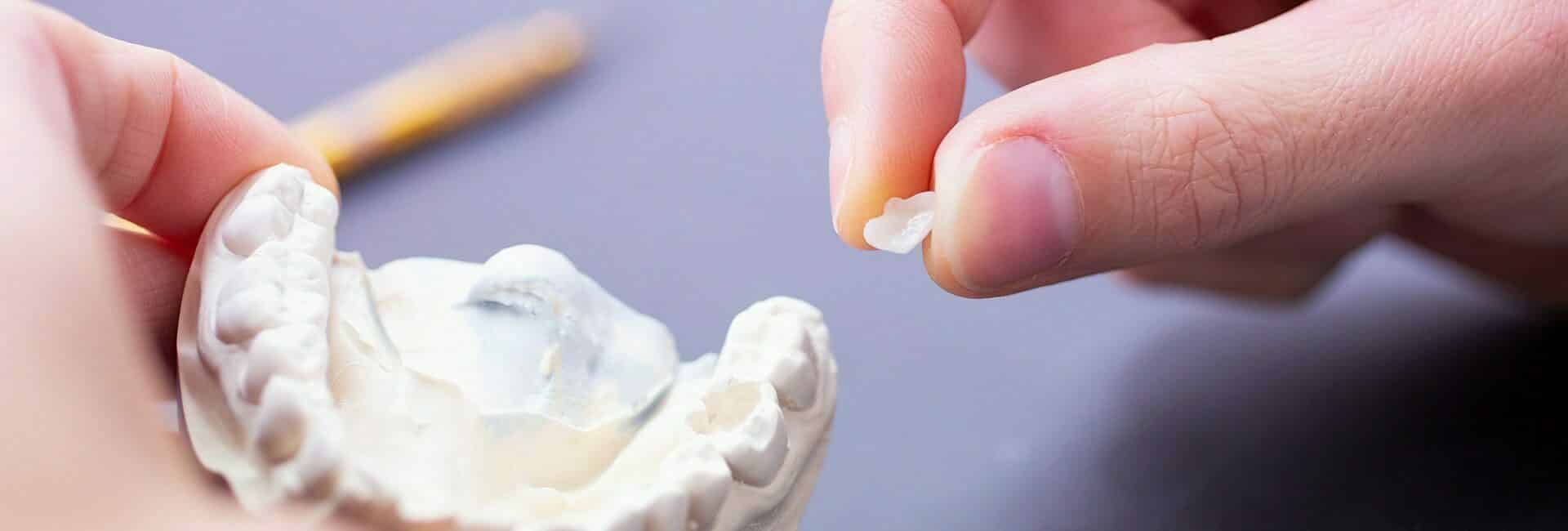
Frequently asked questions about ceramic fillings
What do ceramic fillings/ceramic inlays cost?
A ceramic filling/ceramic inlay costs approx. 825€ per tooth. A fixed treatment plan with the DR. HAGER | fixed price guarantee helps patients to plan their treatment. Depending on the scope, the appointment is longer or shorter.
What material is the CEREC restoration made of?
Tooth-colored feldspar ceramic from Germany or Switzerland.
How long ceramic fillings/ceramic inlays last
On average, ceramic fillings/ceramic inlays last 10-15 years, but with good care they can last a lifetime. The ceramic inlays can last a lifetime, provided the teeth are well cared for at home and with regular dental hygiene sessions.
How long does a CEREC treatment take?
This varies depending on the size of the defect.
Approx. 1 hour per tooth.
How good are ceramic fillings/ceramic inlays?
Ceramic fillings/ceramic inlays are basically the best filling option, combining visual beauty with high stability and durability. They are also the most biological solution, as they are made of ceramic.
Does the CEREC inlay also work on implants?
Since implants do not get caries, they do not need ceramic fillings. Ceramic crowns are used on implants.
When are inlays useful?
Inlays are useful for dental defects in the posterior region. Both for carious defects and for old fillings that are inadequate or have been lost. In most cases, it is old composite/resin fillings that leak and are unfortunately only noticed late when they are in a poor, inadequate condition.
Are CEREC treatments possible without impressions?
Yes with the state-of-the-art 3D scans, just sometimes small impressions to check the fit in the lab.
How are inlays used?
Ceramic inlays are bonded to the tooth. This work step is quite complex. The individual steps must be carried out carefully and in detail. For example, the bonding is very sensitive to water, which is why the dentist must guarantee complete drying. After the bonding material has been applied in the next step, the ceramic inlay is cemented in place. The dentist then finishes the new inlay in the mouth. A final polish gives the inlay a beautiful shine.
For which patients is CEREC particularly suitable?
For patients with caries in the posterior region. The caries should not be too deep under the gums. The solution for this case is a highly esthetic ceramic crown.
Why is the CEREC material particularly well tolerated?
The CEREC material consists of feldspar ceramic and is a so-called non-metallic material, which means that it does not react with other metals in the patient’s teeth or body. As this material is immune-neutral and cannot be dissolved by acids, it is biocompatible. Negative reactions can be practically ruled out even for allergy sufferers and patients with weakened health.
Are there disadvantages and limitations of CEREC inlays?
If caries is circular around the tooth or too deep under the gum, the CEREC inlay cannot be bonded.

